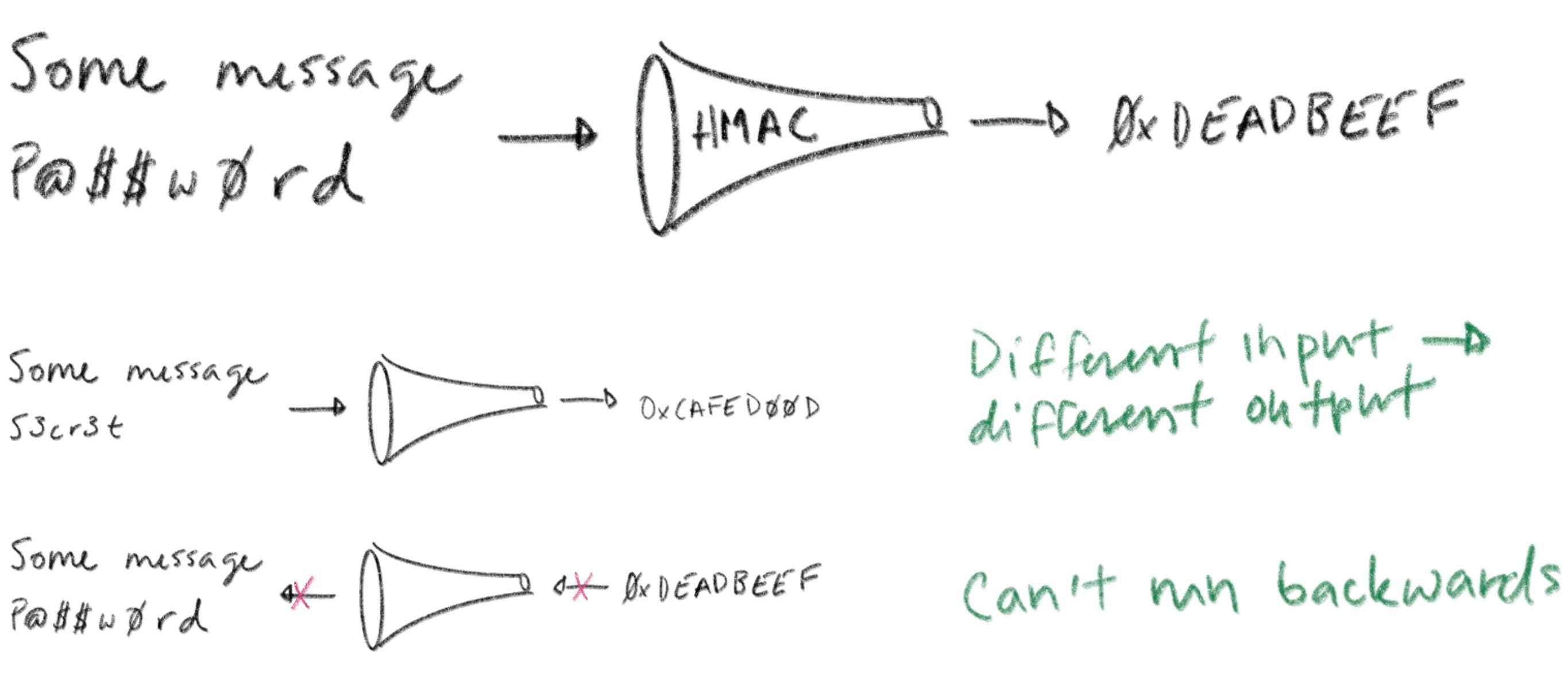Signatures
A message authentication code (MAC) is a bit of data that's used to verify which entity sent a message, and to ensure that a message hasn't been modified. The basic idea is to feed a shared secret (a password) along with a message through a hash function. The hash output is a MAC. You send the MAC along with the message to some recipient.
A recipient that also knows the shared secret can produce their own MAC and compare it to the one provided. Hash functions have a simple contract: if you feed them the same input twice you'll get the exact same output. If the input is different -- even by a single bit -- the output will very likely be totally different. If the recipient's MAC matches the one sent with the message, it can be confident that the message was sent by another entity that knows the shared secret. Assuming only trusted entities know the shared secret, the recipient can trust the message.
Hash functions are also one-way: it's computationally infeasible to take the output of a hash function and reconstruct its input. This is critical to maintaining the confidentiality of a shared secret: otherwise an attacker could snoop your MACs, reverse your hash function, and figure out your secrets.

Why Talk About MACs & Hashes?
All this talk of MACs is prologue: our real story starts with signatures. A signature is conceptually similar to a MAC, but instead of using a shared secret you use a key pair. With a MAC, at least two entities need to know the shared secret: the sender and the recipient. A valid MAC could have been generated by either party, and you can't tell which.
Signatures are different. A signature can be verified using a public key but can only be generated with a corresponding private key. Thus, a recipient that only has a public key can verify signatures, but can't generate them. This gives you tighter control over who can sign stuff. If only one entity knows the private key you get a property called non-repudiation: the private key holder can't deny (repudiate) the fact that they signed some data.
They're called signatures for a reason: they're just like signatures in the real world! You have some stuff you want someone to agree to? You want to make sure you can prove they've agreed later on? Cool. Write it down and have them sign it.